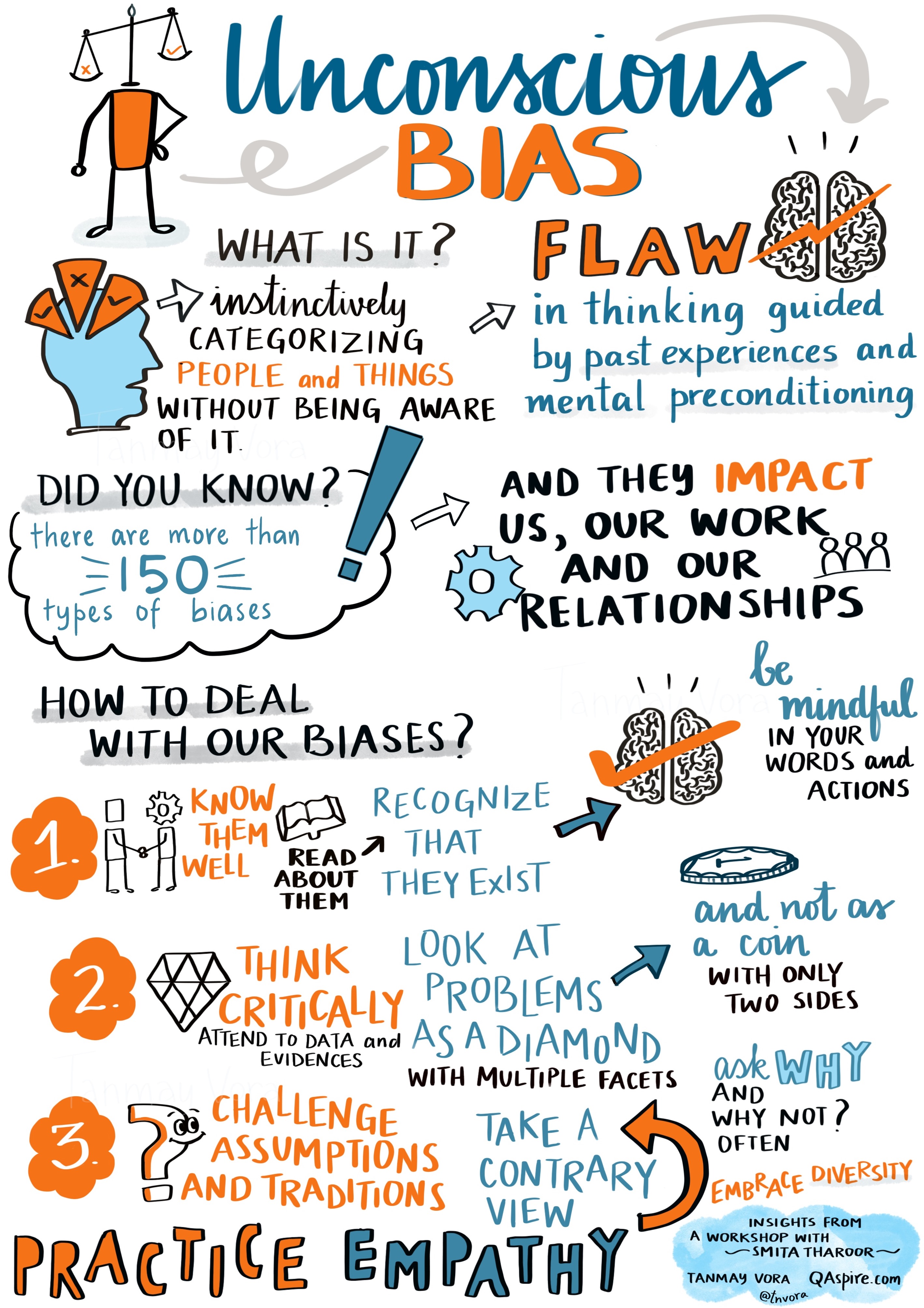Being Conscious About Our Unconscious Biases
Tanmay Vora
I attended a very interesting workshop a few weeks ago on the topic of “Unconscious Bias” facilitated by Smita Tharoor. I was interested in this topic because I explored the intersection of critical thinking and leadership a few years ago. This was a good opportunity to get back to the topic and add to my understanding.
What is Unconscious Bias
The term ‘cognitive bias’ was coined by Amos Tversky and Daniel Kahneman in 1972 which quite simply means “our tendency to filter information, process facts and arrive at judgments based on our past experiences, likes/dislikes and automatic influences.”
How do these biases show up in Leadership?
A lot of leadership is about taking decisions involving group of people. Instinctive leaders often tend to decide quickly based on limited information or experience they have at hand. The result is that they end up taking wrong decisions (which may have worked for them in past but may not work in a different context), or discriminating with people of a certain color, race, sex or nationality based on their past experiences with similar people. At work, biases (or the perception of bias) is the biggest contributor to people disengagement and cost of disengagement is huge. Lack of critical thinking also leads to short-termism where decisions are taken for immediate gains and solutions of today become thorny problems of tomorrow.
Get a Visual Leadership Pack of 65+ Sketchnotes
Some Ways to Deal with Unconscious Bias
Get Conscious. Be more aware about unconscious cognitive biases. Knowing that they exist is the first important step to tackling them. And they exist in plenty. Here is a list of all unconscious biases and what they really mean.
Ask questions, often. When considering a decision, ask questions that elicit understanding and clarify details. When you ask questions, you extend an opportunity to others to really express them. You are extending an opportunity to yourself to understand their thinking more closely. Encourage a culture where asking questions is valued.
Look for Patterns. Data over a period of time reveals patterns. Looking for patterns from the results of past decision can lead to important insights and learning. Sometimes data can blind us unless we learn to look at the pattern and story behind the data.
Look for the contrary. It helps playing a devil’s advocate and taking a contrarian view of things. It not only challenges others to think harder but also helps you in really understanding if they are just defending their own biases.
Embrace Diversity. This starts with hiring decisions. Don’t hire people whose beliefs are compliant with yours. You will tap into diverse ideas and viewpoints only when you have people with diverse thinking patterns on your team.
Attend to data and evidences. When you ask your people to bring data, evidences and trends, it does not mean lack of trust. It only means that you are intentional about serving them better by taking the right decisions.
Communicate clearly. Clear and accurate communication is a leader’s tool #1. Avoid using generic terms to describe people, situations and things. Biases are most commonly visible in how a leader communicates. Being mindful about our words is critical to thinking and communicating objectively.
Here is a sketchnote summary of the discussions during the workshop.
Also Read at QAspire:

Hi Tanmay,
This is one of most complex topics, leaders of today face, & you made it simpler with clear explanation and of course a superb Sketch note.
Thank you Tanmay. It’s Brilliant.